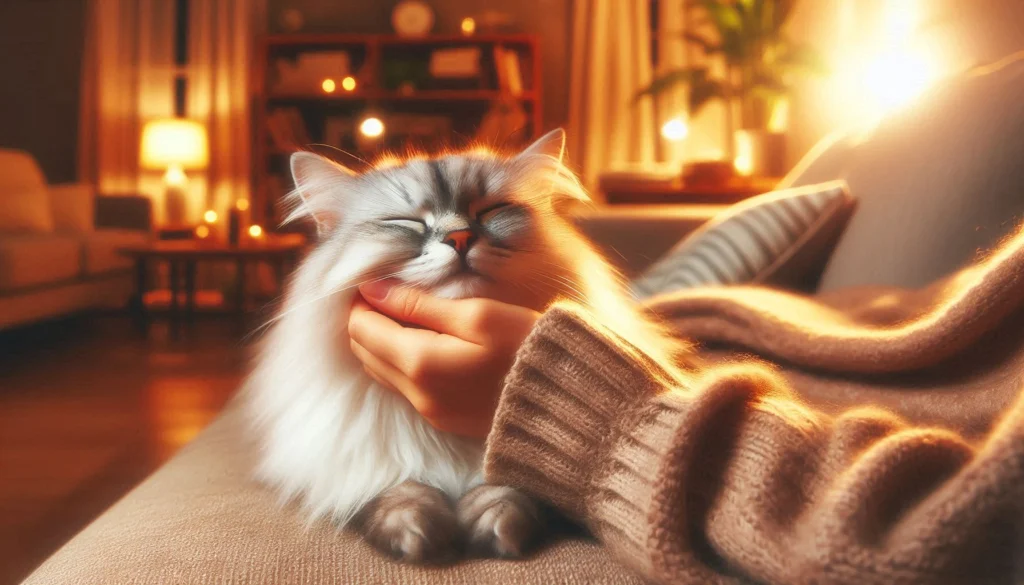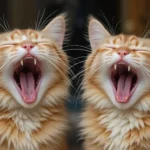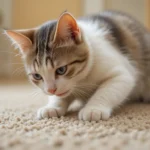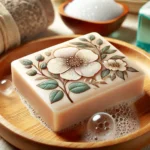Table of Contents
An intriguing behavior is bunting, in which cats rub against object faces. Although we might find this odd, it is very important to their way of appropriately communicating with and understanding their surroundings. This instinctive behavior states a combination of feelings along with instincts in territoriality and even a form of social bonding. Knowing why your cat might engage in this habit will allow you to relate even more with your feline friend.
Role of Scent Glands on Cats
Scents glands are present on various parts of cats’ faces: the cheeks, chin, forehead, even around the mouth. These scent glands produce pheromones, or chemical messages unique to that individual animal. So when your cat rubs its face against furniture, people, or other animals, it’s leaving behind a scent that carries very important messages.
Pheromones serve as a signature scent that marks the territory and says, “This is mine” to the world of the cat. That will give your cat an impression that their space is secure and their surroundings are familiar. And naturally, it points out who’s been in the vicinity – other members of the feline species, a wordless way of communicating. In indoor cats, this is especially vital for creating a facilitative, comfortable, and rather stress-free environment.
Cats also rub their faces against you, which is, in kitty language, a huge compliment! That means that they consider you a part of their safe circle that they feel at ease with. So, although it may seem as if it’s attention-seeking, it’s their way of showing trust and affection.
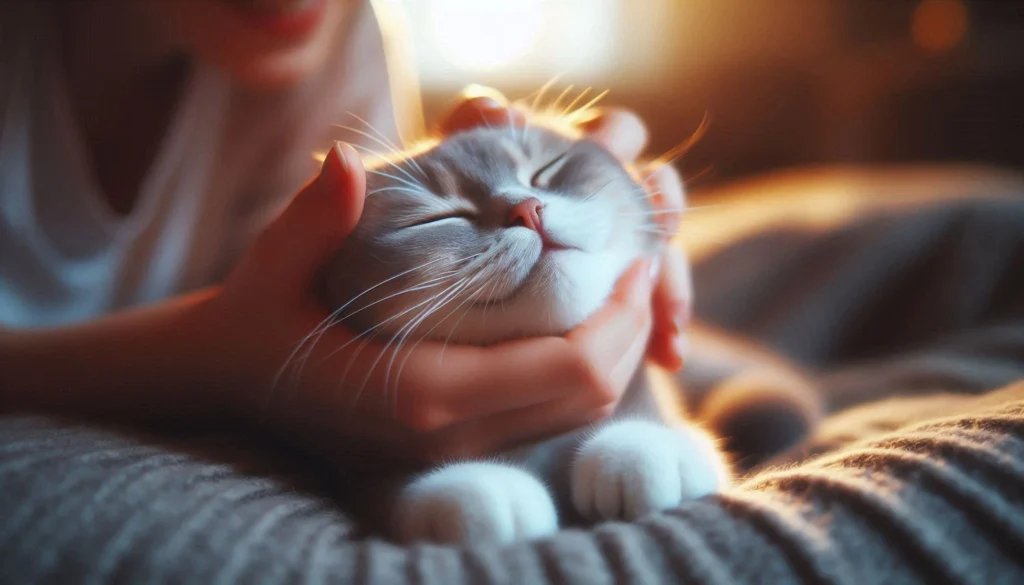
Why Cats Rub Faces
Territorial Marking
One of the characteristics of cats is their territoriality, and face rubbing is one way they claim ownership. If your cat rubs its face on furniture or walls, it’s proclaiming, “This belongs to me.” Territorial marking is usually more apparent in multi-cat households, where every feline feels it has a need to stake its claim on shared spaces.
It also applies to humans. In case your cat does this frequently, rubbing its face on you is a way of marking you as part of its territory. This is a sign of trust and affection, but it also means your cat is affirming its bond with you.
Spreading Familiar Scents
Cats use their ability to smell in order to navigate a lot of their environment, spread their own scent, and build an atmosphere full of familiar, comforting smells. For indoor cats it is a really great way to establish a feeling of stability inside their surroundings.
This has nothing to do with territorial marking; it’s all about a private sanctuary. The smells on those objects your kitty rubs its face on calm it down. Changes in the house, like shifting the furniture or bringing in a new piece of furniture, will have your cat rubbing its face more often on those items to familiarize itself.
Social Bonding
Face rubbing isn’t always about territory; it’s also a sign of affection and trust. Cats often rub their faces on humans or other pets to strengthen social bonds. In multi-pet households, this behavior is a way of saying, “We’re friends.”
When a cat rubs on you, it is trusting and then bonding. Cats interact in this way. For example, you may have observed cats rubbing faces during greeting or grooming sessions. It is their way of connecting and displaying friendly feelings.
Relieving Stress
Also, rubbing their faces can be a de-stressor for cats. A new or strange environment is always made familiar by spreading their scent, and in return, intimidation is decreased.
This enables them to deal with changes and could be a mechanism also for calming themselves down. Like, if you cat has to move to a new place or if furniture has been rearranged and you find your cat rubbing its face on things so often, these cats are trying to reassert dominance over those areas.
From furniture to walls, to humans and other domesticated animals, the cats rub their face against all of them. Here’s a closer look of why they rub their faces on a lot of things.
Furniture: These include chairs, tables, and even the sofas. These objects are stationary and often lie in places the cat frequently occupies.
Humans: Cats rub against your legs, hands, or face to express their trust and love and mark you as part of their territory.
Other Pets: Cats in a house with other animals will sometimes rub against them to reach out or assert dominance over them.
Doors and Corners: These are the best places where the cat can be scent marking with constant reinforcement

When to be Concerned by Face Rubbing
While face rubbing is normal, extreme or compulsive rubbing may be an indication of something. For instance, over-rubbing might indicate an allergic reaction, or skin irritation, even dental problems.
Look for redness, swelling, or overgrooming on the face. If your cat is obsessive about rubbing its face and seems uncomfortable, get it to the vet. Catching problems early goes a long way toward ensuring your cat lives a healthy life.
How to Learn to Enjoy Healthy Behavior
Observe your cat’s behavior: Pay attention to the timing and location of your cat’s face rubbing to know what drives your cat.
Create a Safe Space: Offer and make him comfortable in a safe space at all times.
Respond to Affection: Show love back by petting or gentle talking when he rubs his body on your body.
Offer Enrichment: Stimulation of his natural behaviors through giving him a scratching post, toys, and enabling a safe space to explore.
Conclusion
It does help in understanding why cats rub their faces on everything, though. This is probably not an odd behavior; rather, it’s a form of expression, affection, and even self-comfort. If you observe your cat’s face-rubbing behavior and take care of it, then that is indeed the way to build up your bonding with your feline friend.
Related Post
Why Cats Wag Their Tails: A Powerful Guide
